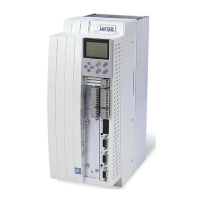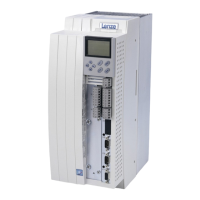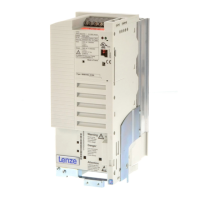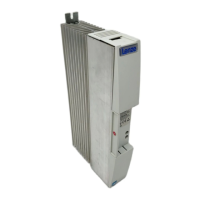Troubleshooting and fault elimination
Drive behaviour in the event of faults
Fault analysis with the history buffer
3
28
EDKVF93−05 EN 1.0
3.3 Drive behaviour in the event of faults
The controller reacts in different ways to the three possible types of fault (TRIP, message
or warning):
TRIP
TRIP (display of keypad XT: )
ƒ Switches the power outputs U, V, W to a high resistance until TRIP is reset
ƒ Entry of the fault indication into the history buffer as "current fault" in C0168/1.
ƒ The drive is coasting without control!
ƒ After TRIP reset (# 38):
– The drive accelerates to its setpoint along the set ramps.
– The fault indication is moved into C0168/2 as "last fault".
Messages
Message (display of keypad XT: )
ƒ Switches the power outputs U, V, W to a high resistance.
ƒ Entry of the fault indication into the history buffer as "current fault" in C0168/1.
ƒ In case of a fault £5 s:
– The drive is coasting without control as long as the message is active!
– If the message is not active anymore, the drive accelerates to its setpoint with
maximum torque.
ƒ In case of a fault >5 s:
– The drive is coasting without control as long as the message is active!
– If the message is not active anymore, the drive accelerates to its setpoint along the
set ramps.
ƒ If the message is not active anymore, the fault indication is moved to C0168/2 as
"last fault".
Warning
"Heatsink overtemperature" (keypad XT:OH )
ƒ The drive operates under control!
ƒ The warning signal goes off if the fault is not active anymore.
"Error in motor phase" (keypad XT:LP1)
"PTC monitoring" (keypad XT:OH51)
ƒ The drive operates under control!
ƒ Entry of the fault indication into the history buffer as "current fault" in C0168/1.
ƒ After TRIP reset, the fault indication is moved into C0168/2 as "last fault".
efesotomasyon.com - Lenze

